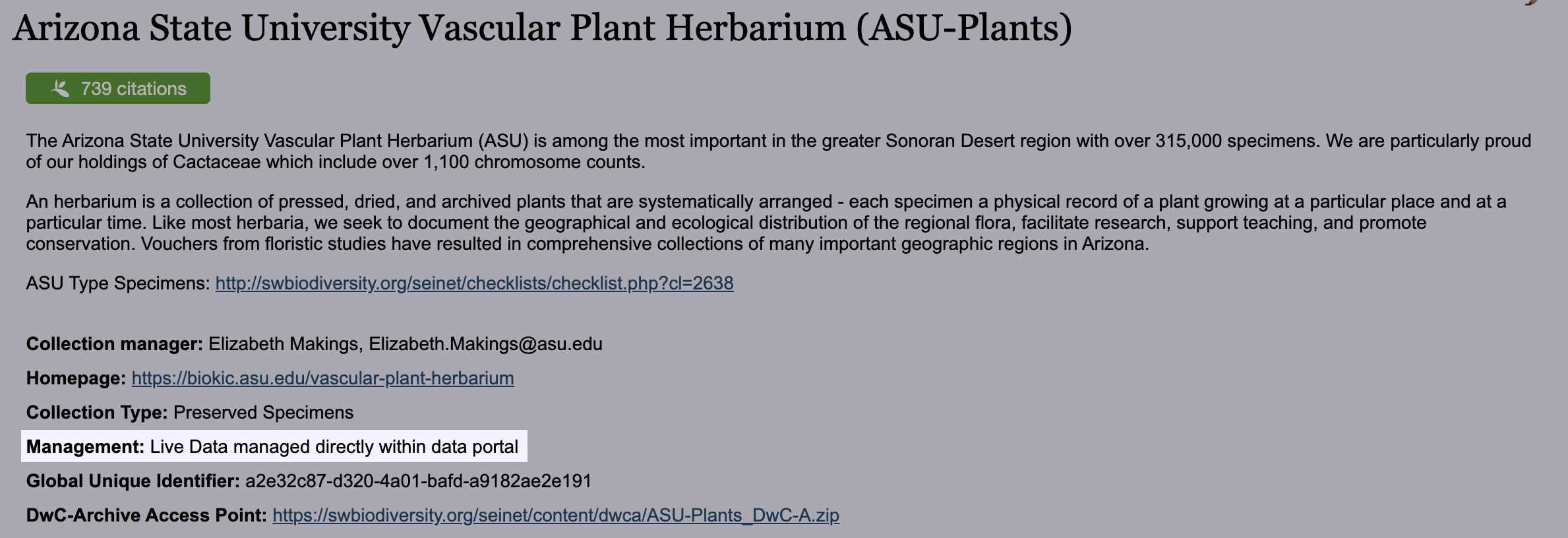Management Types
There are two main ways that collections present their data in Symbiota portals: live or as a snapshot. Each collection's data management method in Symbiota can be found on its respective profile. For example:

A live collection is one that manages their data directly in the Symbiota portal. Data entry, data editing, and digitization are conducted via a web browser within Symbiota portal. Live collections can start with as much or as little data as a collection wishes; if the collection already has a spreadsheet, database, or Darwin Core Archive of their collection data, they can import the data into the Symbiota portal and manage the data in the portal henceforth. A collection can also start the digitization process in the portal without any starting data. Some advantages to live management in a Symbiota portal include:
- Management of data through a web browser, enabling multiple users (once granted appropriate permissions) to manage data remotely
- Access to efficient digitization tools, such as batch georeferencing and duplicate data harvesting
- Access to data cleaning tools for taxonomy, geography, and more
A snapshot collection is one that manages their data in a different content management system (e.g., Access, Specify, CSpace) and imports a copy of their data into a Symbiota portal so it can be discovered by more users and/or published to global aggregators. Snapshot collections can import their data into a Symbiota portal via a spreadsheet, Darwin Core Archive, or through an IPT (Integrated Publishing Toolkit) or other web-based system. A collection can set up and save an import profile that will allow future updates of the data as long as the unique identifier from that source (called "dbpk" in a Symbiota portal) remains the same between imports.
In both cases, collections in Symbiota portals benefit from:
- Participation in a network with special regional and/or taxonomic expertise
- Assistance with backend queries and daily troubleshooting through the Symbiota Support Hub
- Quick and easy publication of your data to global aggregators (e.g., GBIF), if desired